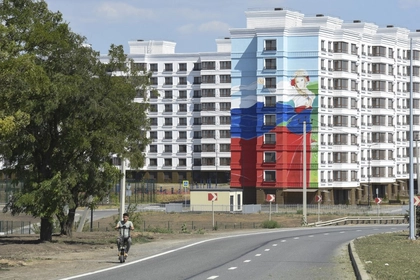In a recent article for the Henry Jackson Society, an extract of which was published by Kyiv Post on Sunday Oct. 13, David Kirichenko drew attention to the increasingly significant role Artificial Intelligence (AI) is playing on the battlefield in the war in Ukraine particularly in enhancing the ability of drones to target the enemy.
According to articles in TIME magazine and the UK’s Forces News military issues website the leap forward that AI has provided Ukrainian drones has increased their hit rate from below 50 percent in 2023 to nearer 80 percent this year. Much of this is put down to the impact of AI software provided by the US based company, Palantir – who TIME has dubbed the “AI arms dealer of the 21st century.”
An example of the technology’s success is the SAKER reconnaissance drone, in which Palantir’s AI software is embedded. The drone is said to be able to independently identify personnel, tanks, armored vehicles among other targets and feed that information to its command post to select when to hit the enemy and with which weapons.
However, the critical edge comes from the ability of the AI to “learn” and for Ukrainian operators to “train” the software further it is said that SAKER can now distinguish Russian soldiers simply by their uniforms, their weapons and equipment and even by the way they move after being “fed” countless videos of Russian operational forces.

Ukrainian Naivety is Both Good and Bad
The SAKER has a range of 10km and an inertial guidance system which doesn’t rely on GPS for navigation, making it far less susceptible to jamming. Over the last 12 months the increase in electronic warfare (EW) countermeasures on the battlefield has heavily impacted the successful strike rate by drones.
Field reports said that for newly qualified UAV pilots the hit rate became as low as 10 percent while even the most experienced operators were struggling to achieve a 50 percent success rate. However, with the advent of Palantir’s AI, which according to the Forces News report is used to power nearly all of Ukraine's drones used for artillery targeting, this can be raised to nearer 80 percent.
The Palantir software is designed to collate data gathered by a number of sources, including human intelligence, drones, radar, thermal imaging and so on that can detect movement on the battlefield and the sources of artillery fire.
Palantir’s AI modelling then processes the data and will offer a variety of targeting options for commanders to exploit.
There’s a danger in giving AI-equipped drones too much autonomy because AI can’t always assess the nuances on the battlefield that a human operator can.
Kirichenko, says AI-equipped drones are “Leveraging technology to counter both Russia's superior personnel numbers and larger quantities of systems and weapons.”
He believes that in doing so “Ukraine has really defied the narrative that a much bigger power will overwhelm a much smaller nation.”
However, he does voice a note of caution concerning some of the moral aspects associated with the explosion in AI use. He asks what if AI is able to recognize the Russian military simply by their movement even when out of uniform and could it then distinguish between Russian civilians?
He says that Ukrainian and Western forces would probably take that into account and hold its fire but says that the Russians, based on the way they have acted up to now, probably wouldn’t.
He argues that there is also a danger in giving AI-equipped drones and other battlefield systems too much autonomy because he feels that AI isn't always able to assess the nuances on the battlefield that a human operator can – a potentially dangerous blind spot that could lead to errors of judgment, particularly when you consider the similarities between much of the equipment and weaponry deployed by both sides.
Nevertheless, he argues that the AI revolution is only going to continue and accelerate for which Ukraine needs to ensure that it stays ahead in the development of this new technological frontier. As Forces News writes: “The war of the future is likely to be as much about algorithms as armor.”
You can also highlight the text and press Ctrl + Enter






